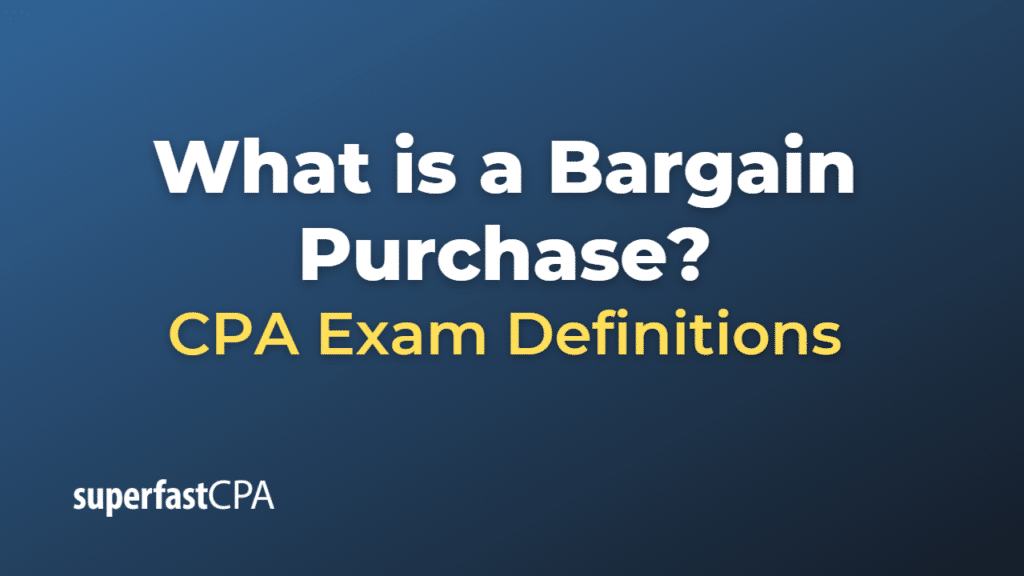Bargain Purchase
A bargain purchase is a term used in accounting and finance to describe a situation where a company acquires another company or its assets at a price significantly below their fair market value. This usually occurs when the selling company is in financial distress, needs to liquidate its assets quickly, or is undervalued due to market conditions.
In the context of business combinations, a bargain purchase is recognized under the acquisition method of accounting, as outlined by the International Financial Reporting Standards (IFRS) and the U.S. Generally Accepted Accounting Principles (GAAP). When a bargain purchase occurs, the acquiring company must allocate the difference between the purchase price and the fair value of the net assets acquired to goodwill, which is then recognized as a gain on the income statement.
A bargain purchase may be attractive to the acquiring company, as it can potentially create synergies, increase market share, or provide access to new resources at a relatively low cost. However, it is essential to carefully evaluate the target company’s financial health, potential liabilities, and integration challenges before proceeding with a bargain purchase to ensure long-term value creation.
Example of a Bargain Purchase
Let’s consider a fictional example of a bargain purchase involving two companies in the technology industry.
Company A is a successful software development firm specializing in customer relationship management (CRM) software. Company B is a smaller software company that has developed an innovative artificial intelligence (AI) technology that can enhance CRM systems. However, Company B has been facing financial difficulties and is struggling to market its product.
Company A sees the potential of integrating Company B’s AI technology into its CRM software and decides to acquire Company B. The fair market value of Company B’s net assets (assets minus liabilities) is $10 million, but Company A negotiates a purchase price of just $6 million due to Company B’s financial distress and urgent need for cash.
In this example, Company A has made a bargain purchase by acquiring Company B’s assets for $4 million less than their fair market value. Following the acquisition accounting rules, Company A would recognize this $4 million difference as a gain on its income statement.
This bargain purchase can potentially benefit Company A by acquiring valuable AI technology at a significantly lower cost and further enhancing its CRM software offering. However, Company A must also be prepared to address any integration challenges and potential liabilities associated with Company B’s financial situation.













